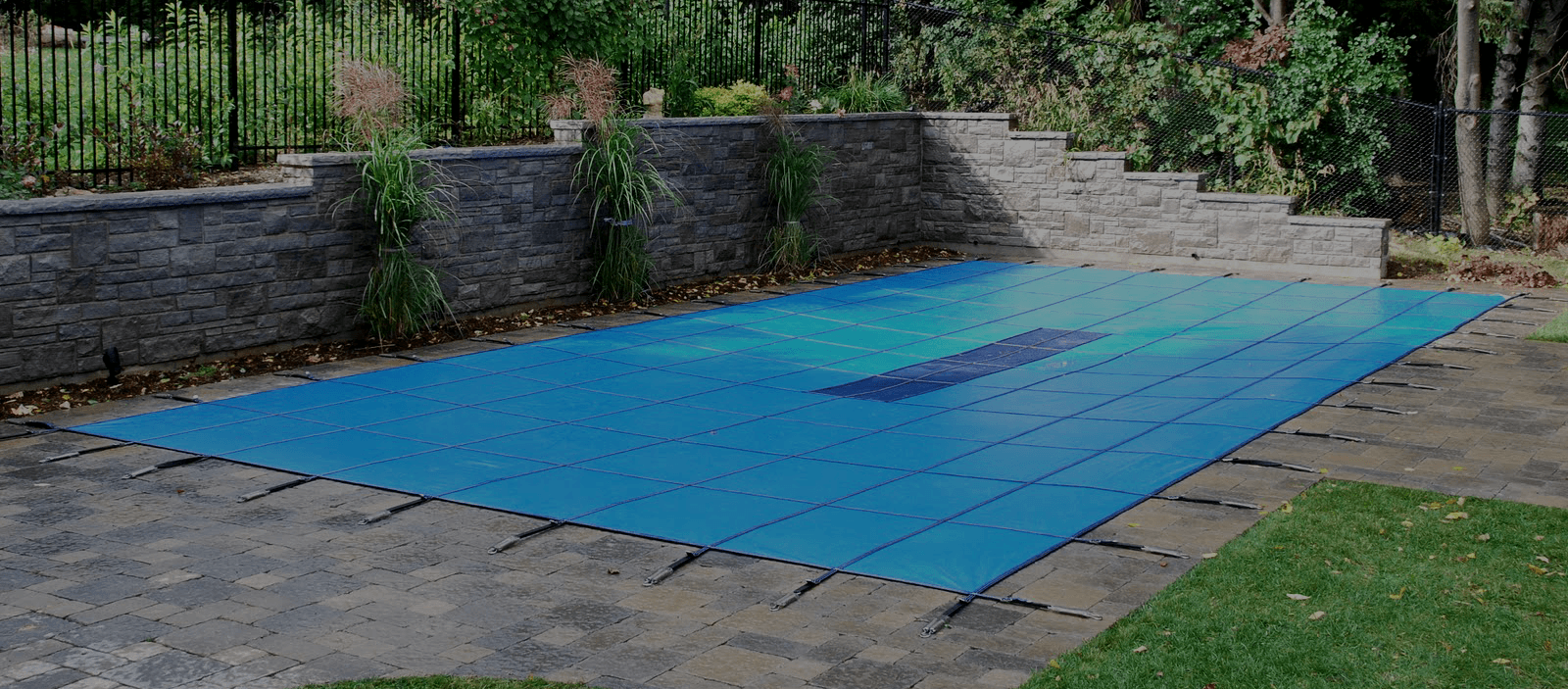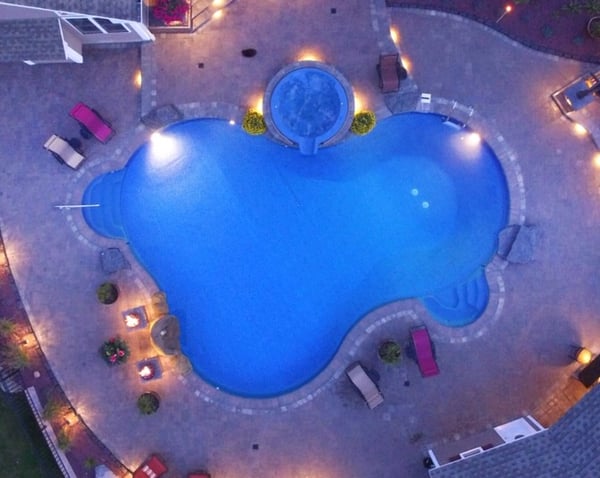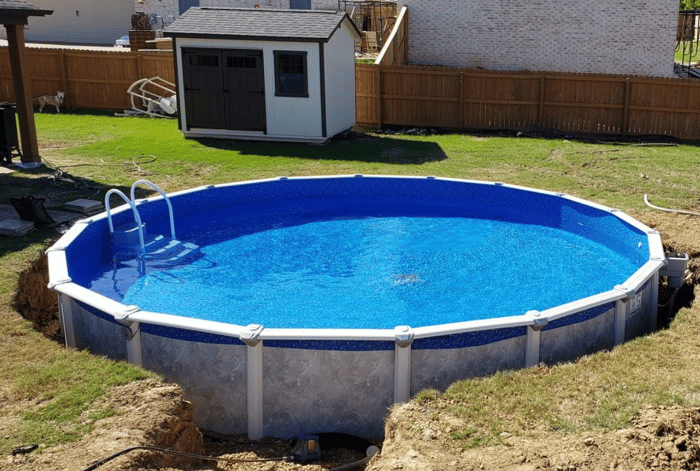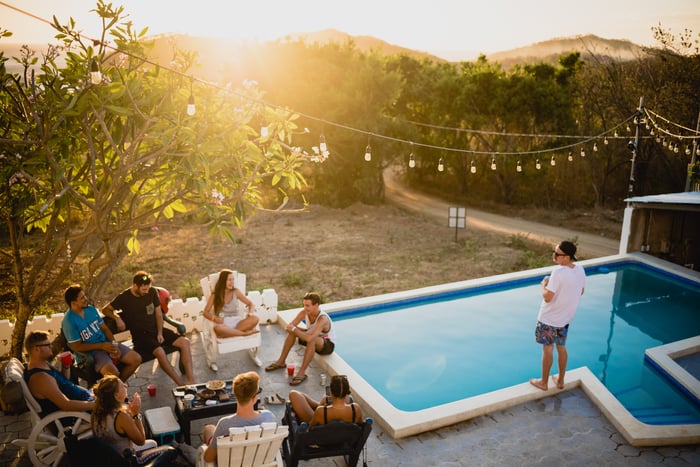Pool covers are an essential piece of pool equipment that protects your pool when you aren't using it. When the weather is too cool to swim or if you have a pool on sometimes unoccupied property, a pool cover protects your pool by keeping it both clean and safe.
A properly fitted and installed pool cover will keep leaves and debris from falling into your swimming pool, will discourage algae growth, and can prevent children, adults, and animals from falling into the pool (or taking a chilly dip) when the pool is not in use. In this article, we'll cover the details on how to measure your swimming pool for a safety cover.
FAST FACT: While safety covers have traditionally been used for inground pools, depending on your pool deck, an above ground pool can also take advantage of the many benefits of a safety cover instead of using a winter cover.
Standard vs Custom Pool Covers
If you have a standard geometrical pool, such as a rectangle with no bells or whistles, then a standard pool cover of the right size will do the trick. However, if you have a particularly shaped pool or additional pool features like a waterfall or slide, then you may need a custom cover instead. Getting a custom cover is all about taking accurate measurements to ensure the cut-out of the cover's shape is correct in order to completely protect the surface of your pool.
%20-%20Copy.jpg?width=1280&name=Royal%20Swimming%20Pools%20Safety%20Covers%20(2)%20-%20Copy.jpg)
Figuring Out Your Pool Cover Requirements
Here at Royal Swimming Pools, we are proud to provide both standard and custom pool covers based on your needs. Not sure you need a custom pool cover? Here's a helpful article to help you know which is right for your pool. Not sure if you want a solid or mesh cover? This guide can help! But if you're not sure how to take accurate measurements for a custom pool cover, that's what we're going to help with here.

Identify Your Pool Shape
First, you'll need to identify if you're going to need a standard or a custom safety cover. This is usually (but not always) determined by the shape of your pool. Check out the chart on our custom pool cover measurement form (shown below as well). This shows a variety of pool shapes along with their standard proportions. Each type has a particular way that the dimensions can be easily measured, and most tend to have predictable proportions based on the shape style that allows you to check your math. 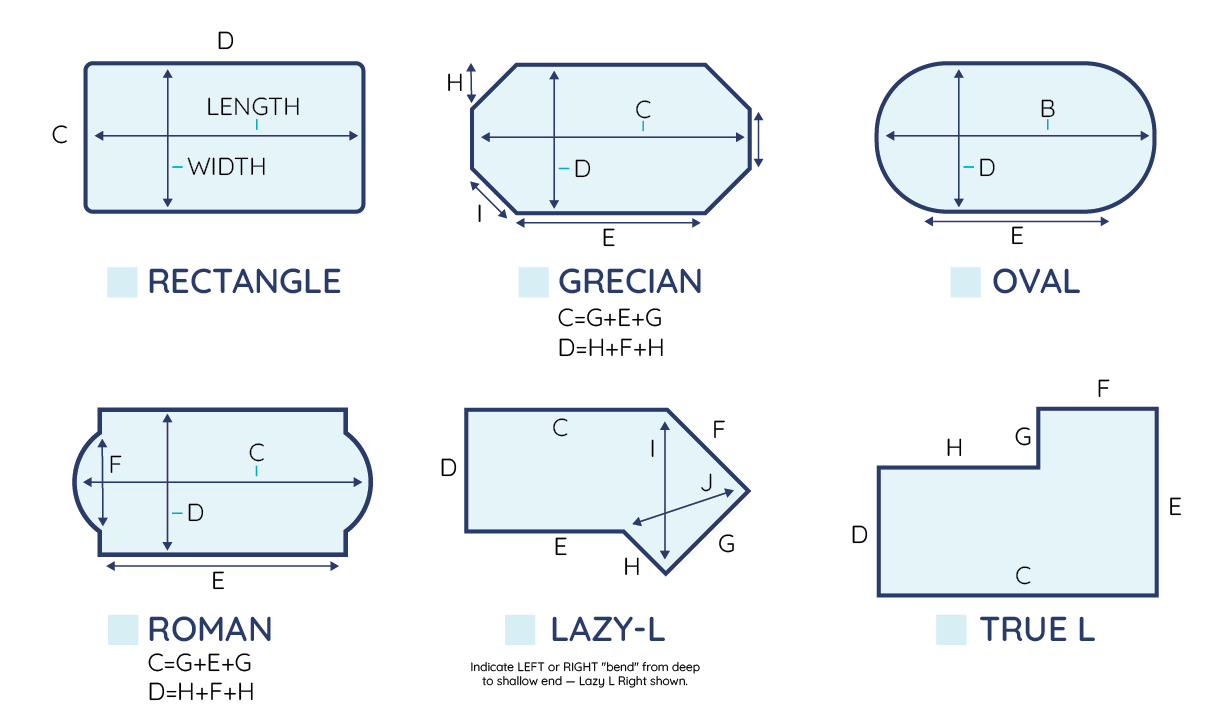
Or you might have a kidney shape or completely custom pool that is slightly more challenging to measure. The important thing is to know what you're starting with so you know what you'll need to measure.
Common shapes can use standard measuring, by measuring the points on the pool needed. Custom pools or freeform type shapes will have to use AB Measuring.
Standard Measuring for Common Pool Shapes
1) Take Perimeter and Mid-Length Measurements
Now you're ready to start measuring the pool itself. Start each of your measurements from the edge of the pool, at the top of your pool walls.
If you have one of the shapes shown above, you will want to get the length of each perimeter line. These lines will be from the corner-to-corner along with the total length and width, and the length and width of each section labeled, i,e, section A, B, C, etc. Take another look at the shapes above or in the measurement form here for helpful visuals on which measurements to take.
One helpful trick is to use a measurement string if your tape-measure is not long enough. A long ball of string can allow you to get point-to-point measurements both along the perimeter and across the water. Then you can measure the marked-off lengths of string.
Regardless of how you take your measurements, spot check them twice for accuracy to be certain they are consistent. Remember, the old saying, measure twice, cut once.
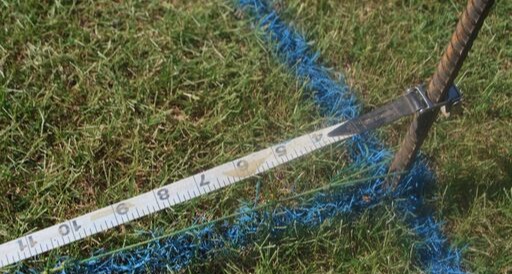
2) Measure the Footprint of Pool Features
Next, you'll need to measure the footprint of each non-removable pool feature.
This step involves measuring how much the pool features will impact your cover, which will need to fit around these items. Anything that protrudes near or over the pool wall should be factored in. This includes stair and ladder rails, diving boards, waterfalls and water features, attached spas, and slides along with anything else that interrupts the line of your pool perimeter.
Carefully measure how far they protrude into the pool, how wide the protrusion is, and the shape of each protruding feature.
-2.jpeg?width=600&name=WON%20chris%20from%20Michigan%20%20(36)-2.jpeg)
If you purchased your swimming pool from Royal Swimming Pools, it should be noted that you don't need to measure your pool features if they were apart of your original order. If you are measuring a non-Royal pool, or have added items to your pool since your order you will need to get the measurements of these items.
How to Take AB Measurements
1) Draw the AB Line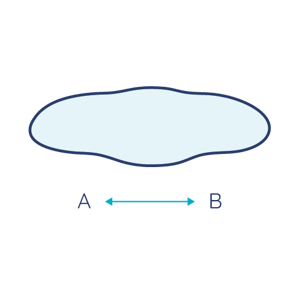
To get scale and measurements correct, you need to establish two points for your AB line. An AB line is a straight line you mark on your deck about 4-5 feet out from the edge of your pool. The line will run between point A and point B.
Your AB line should be about two-thirds the length of the pool. So for example, if your pool is 40' long, the distance between point A and point B should be roughly 26'.
When facing your pool, point A must always be on the left of point B.
Point A and point B should be on a flat surface and the line, if it were to extend out, should not cross the pool at any point. See the example below.
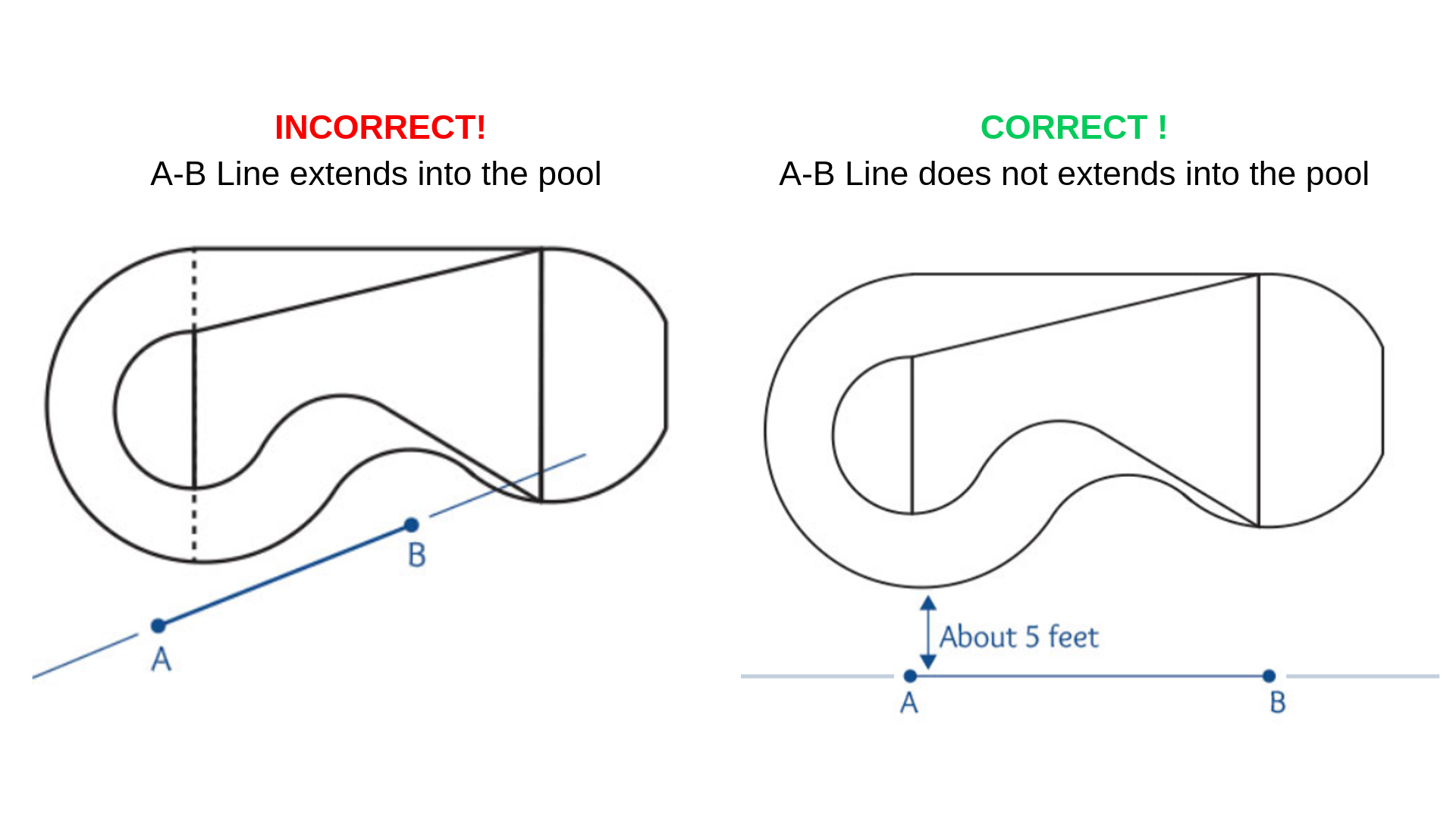
Once you have the ideal AB line location, mark the line on your deck. We recommend a chalk line as this is more accurate than a hand-drawn line.
A chalk line is a tool that spools out chalk-covered string. The string is used to draw a straight line from point to point by using the tight line of string. Snap the string against your deck to create the line.
Measure and notate the distance between point A and point B.
2) Mark AB Points
Halfway between the A and B points, walk to the edge of your pool. This will be point location 1. Mark it as "1" with chalk on the inside edge of the pool.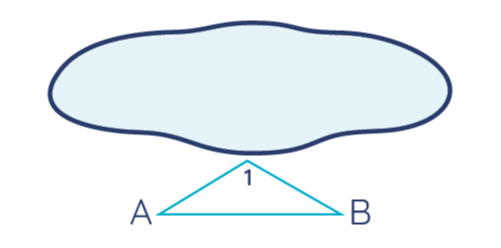
From there, move clockwise, and mark a "2" approximately 2-3 feet away from point "1".The distance between points can vary and do not have to be exact. If you are marking points within a sharp curve or corner, your points will want to be closer to 1-2 feet. If you are marking points along a straight section you can make them further apart. Always make any corners or obvious bends a point.
Continue clockwise, marking the next number every 3 feet out. You want to use numbers instead of tick marks. You will need to reference numbers later down the line and will not want to have to count 70+ something tick marks to know which point you're referencing. Trust us, use numbers.
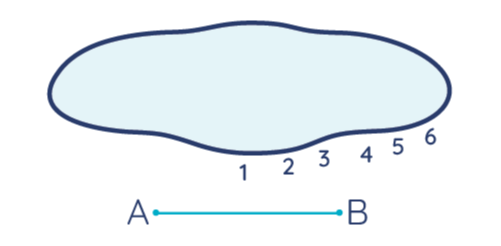
Point locations around any obstructions or features, such as ladders, slides, waterfalls, spas, step sections, etc, should be numbered as well. Do this after you have finished the perimeter. When you add a number for a special feature location, start with the next number you left off from on your perimeter. For example, if your last perimeter number was 85, you would label your first mark on a feature 86 and continue up from there.
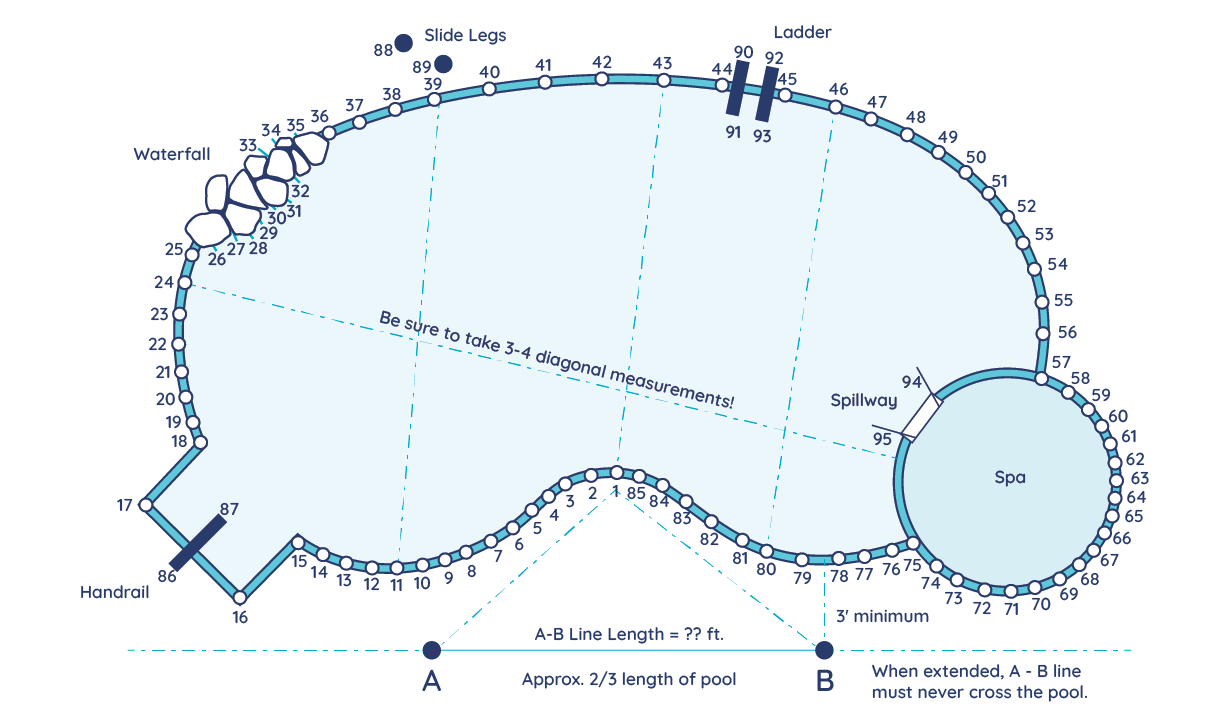
3) Measuring the Distance From A, and the Distance from B
Now measure the distance from Point A to each of your numbered marks.
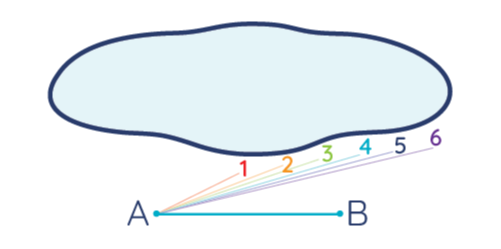
If you are using a 100 ft. measuring tape, secure the end to point A on your AB line and measure the distance to point #1. Note the distance in the "A" column on the chart provided within the form. Continue around the pool until you have recorded all your points with an "A" measurement.
Then secure your measuring tape to point B and repeat the process.
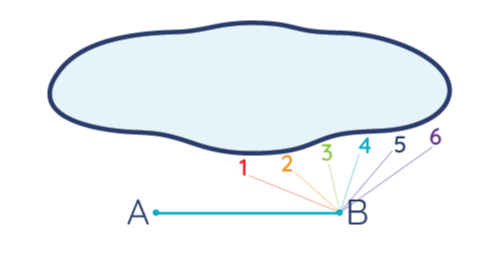
Go back and spot check a couple of measurements again to make sure they are as accurate as possible.
4) Reference Distances
Finally, take 3-4 diagonal measurements randomly from numbered points across the pool. This allows the cover manufacturer to have cross dimensions to reference. Note the numbers used and the distance between in the spaces provided on the form.
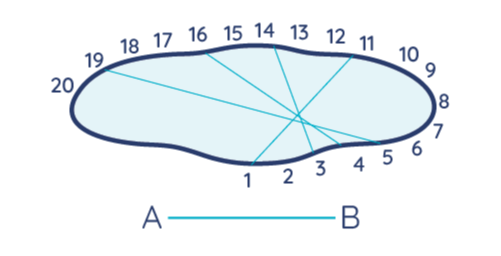
Draw Your Pool with AB Scale Notation
Once you have all your measurements, make your art teacher proud by creating a sketch of the pool, as close to scale as you can. A scale drawing means that the dimensions are the same but the size is smaller. For example, one-centimeter on your drawing might equal one-foot for the pool. Use graph paper for the best results. There is graph space provided on the safety cover measurement form for this. 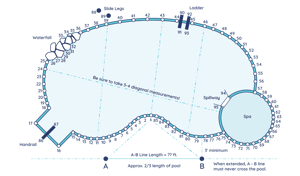
The AB line has to be in the same location on your drawing as it is physically with respect to your pool. Make your drawing match as much as you can.
If using the graph area provided, use the AB line already on the graph to showcase your pool's location and work off of. Draw your pool's shape, the numbered marks, and the special features/obstructions into a scale-image drawing of your pool. This will give us enough reference measurements to create the correct cutout for your pool cover.
Take Photos of the Pool and Features
It is very helpful to also have corresponding photos of your pool. This will help us know what kind of features the cover is being fitted around and how to translate your drawings into a real-world cover. Snap multiple photos of your pool from various angles with the AB charting chalk still in place. If you have a balcony, second story, or even a drone (finally an excuse to use it), an overhead photo of the pool is also very useful.
Fill Out the Form and We'll Do the Rest
Finally, collect all your measurements, notes, and drawings and fill out the custom pool cover measurement form entirely. Then send the form to support@royalswimmingpools.com along with your attached photos. We'll take it from there! 
It's also worth noting that if you have an old pool safety cover, you can send it into us and for a small fee we'll get the dimensions for you AND have your new cover match up to your existing anchors. Because who wants their deck to look like Swiss cheese by having to install anchors in new locations? Keep in mind that AB measurements will still be necessary if new obstructive features were added to your pool after your old cover was purchased.
We hope that you've found this article helpful. If you have suggestions for how it can be improved or if you have a question, feel free to leave us a comment below.
